People say blondes have more fun… but do they mean blonds? Deciding when to use blond vs. blonde gets tricky. This easy guide clarifies the difference so you can correctly describe men and women’s hair color.
Main Blond vs. Blonde Takeaways:
- 👱🏾♂️ Males are blonds with blond hair.
- 👱♀️ Females are blondes with blonde hair.
- The words blond and blonde refer to fair hair.
- The difference between the two comes from French.
- Blond is the gender-neutral term.
- Blond and blonde can be used as adjectives or nouns. As adjectives, American English generally prefers blond while British English typically prefers blonde.
- Caffeinated drinks like coffee are blonde, not blond.
- Adding the letter ‘s’ at the end of the word typically creates a plural version of blond/blonde.
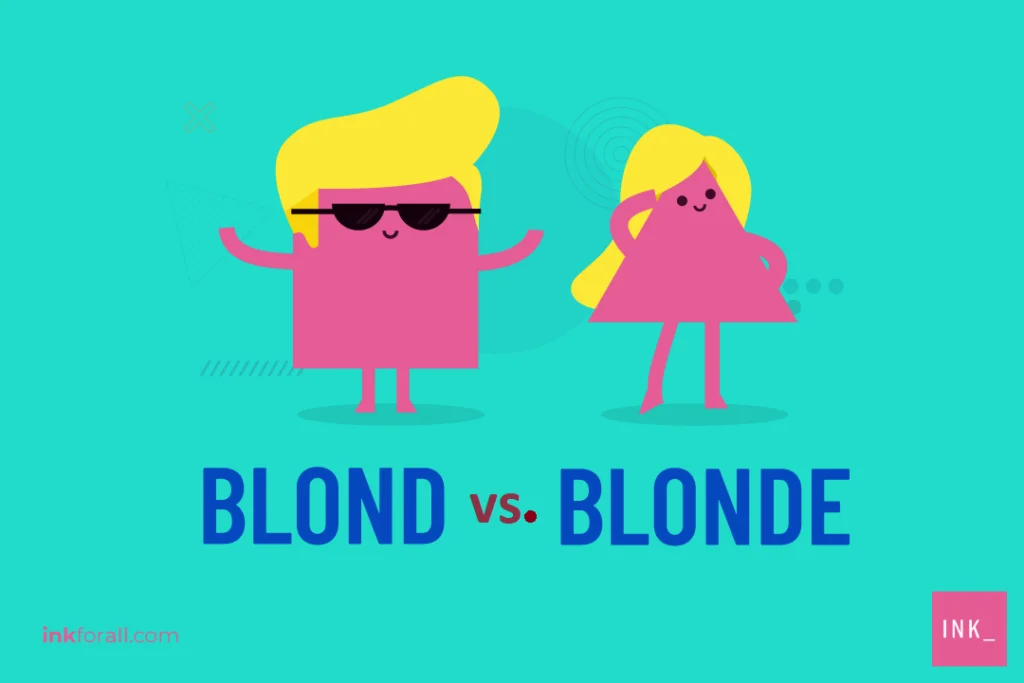

What is the Difference Between Blonde and Blond?
As nouns, the difference between blond vs. blonde is gender. Men are blond while women are blonde. Someone who identifies as neither male nor female is a blond with blond hair. Aside from gender, blond and blonde have the same meaning. Both words describe someone with light hair. What’s more, there is also a regional difference. As adjectives that describe things generally, American English prefers blond while British English prefers blonde.
Determining the difference between blond and blonde can confuse anyone unfamiliar with giving words genders. For example, American English speakers typically do not assign feminine or masculine genders to anything except humans.
Interestingly, things get a bit trickier when describing objects. For instance, some light-colored beverages, desserts, and building materials have different spellings. It’s important to note that this difference often stems from personal preferences, not grammar rules.
A café owner may sell blonde cappuccinos, but that doesn’t mean the drink is feminine. Likewise, a chair constructed from blond wood is not a masculine object.
Here are some examples of how to use blond vs. blonde as adjectives for inanimate objects, not as nouns for people:
- Wood(grains): blond
- Cupcakes: blonde
- Beer: blond
- Coffee: blonde
Some gender-specific French words find a home in American English dictionaries. Over time, words often evolve and become interchangeable, even when it’s not grammatically correct.
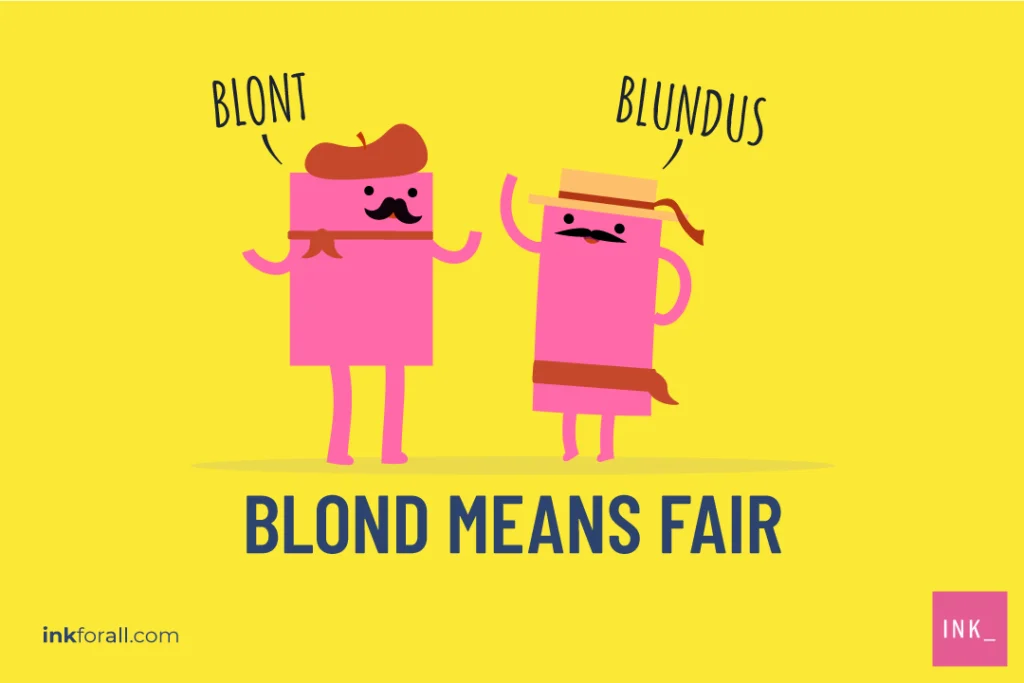

Is Blond in the English Dictionary?
Yes. The term blond appears in both British and American English dictionaries. Below are the definitions for blond, according to the Merriam-Webster Dictionary (American English):
Adjective: of a flaxen, golden, light auburn, or pale yellowish-brown color.
Noun: a person having blond hair
(Spelled blond when used for a boy or man and often blonde when used for a girl or woman.)
The following are the definitions for blond, according to the Collins Dictionary (British English):
Adjective: of a light colour; fair
Noun: A person, especially a man, having light-coloured hair and skin
As you see, there’s no difference at all when it comes to the definition or how blond is used in both forms of written and spoken English. Blond is technically considered a variant of the more popular term blonde and is commonly used as an adjective more than a noun.
Why is Blond Spelled Two Different Ways?
Blond is spelled two different ways because the difference between the nouns blond and blonde is gender. This difference has roots in the French language, which typically has masculine and feminine nouns. On one hand, blondeis the feminine noun; Women are blonde. On the other hand, blond is the masculine noun; Men are blond. The gender neutral version is blond. In other words, both blonde and blond are words, but using them correctly as nouns depends on gender. What’s more, the difference is regional when referring to general adjectives. For example, British English prefers blonde while American English prefers blond.
These rules apply regardless of whether someone has naturally light locks or bleaches their hair. You should also remember these rules when describing someone with highlights.
1. Feminine Noun: Blonde
Women have blondehair. A woman with light-colored hair is a blonde.
2. Masculine Noun: Blond
Men have blond hair. A man with light-colored hair is a blond.
3. Gender-Neutral Noun: Blond
Someone with an undetermined gender is a blond person with blond hair.
4. US Adjective: Blond
American English speakers and style guides opt for the gender-neutral term blond. Since objects do not usually have a gender in English, it makes sense to use the gender-neutral word.
5. UK Adjective: Blonde
British English speakers and conventions tend to use the feminine term blonde.
Is Blonde American or British?
When you want an adjective to describe an object, blonde is more common in British English while blond is more common in American English. However, when it comes to nouns, the difference between blond vs. blonde has to do with gender. For example, in the U.S., the AP Style Guide instructs to use blond (without the ‘e’) to describe a male with fair hair. Conversely, it calls for using blonde for a woman with fair hair (blonde). The gender neutral term is blond.
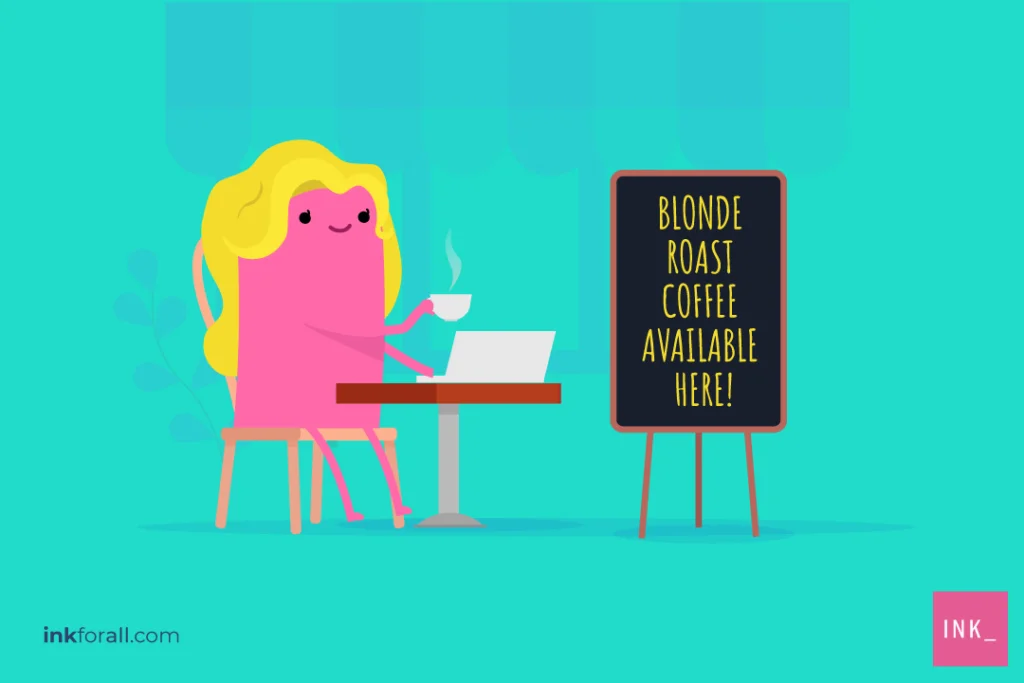

What Does Blonde Mean at Starbucks?
When discussing coffee, use “blonde,” not “blond.” This adjective often refers more to the flavor than the appearance of the coffee. A blonde roast is light, smooth, and flavorful. But it may have the same hue as a medium roast. Therefore, at Starbucks blonde means lighter in flavor.
What Is the Plural Form of Blond vs. Blonde?
The plural form of blond is blonds. Similarly, the plural form of blonde is blondes. This is because Blond and blonde typically take an ‘s’ when becoming plural. An apostrophe is not necessary unless you are conveying ownership.
An ‘s’ isn’t necessary when describing a group of similar men or women.
Use an apostrophe when showing that a blond man or blonde woman owns something. Place the apostrophe before an ‘s’ unless you are referencing multiple people.
Tress Stress: Other Hair-Related Grammar Rules
Deciding between blond vs. blonde isn’t the only dilemma you may face when describing hair. Here are some other confusing words:
1. Gray/Grey
The rules for gray hair are less complicated than blond hair. When using American English, use gray. On the other hand, grey is the correct spelling for writers who use British English.
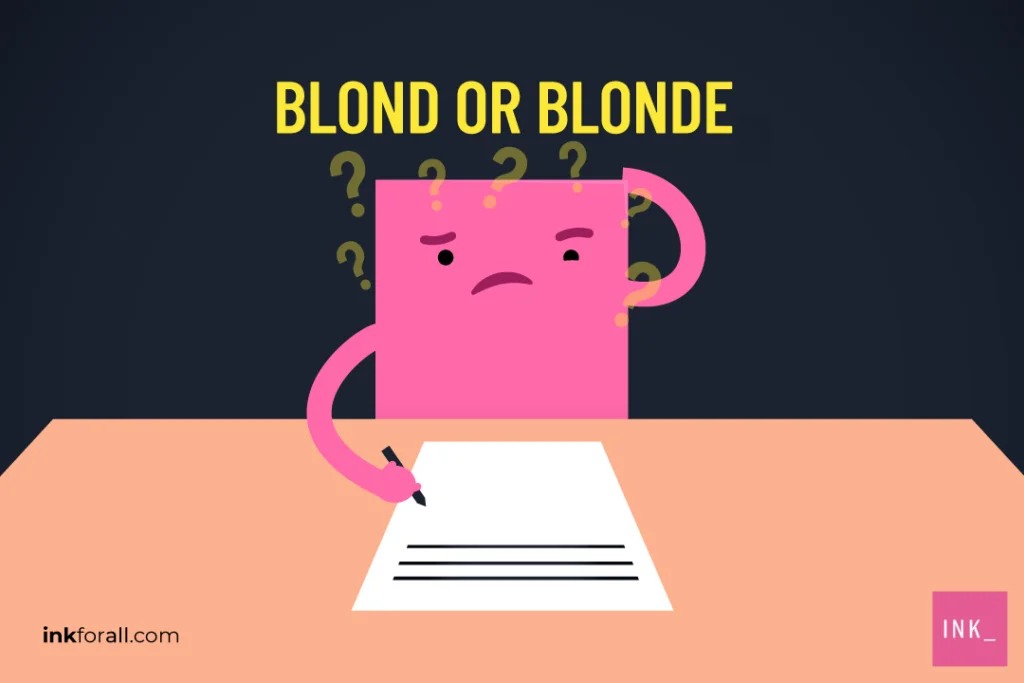

2. Hair /Hairs
Hair and hairs are both plural terms, but hair is also singular. You have a head of hair, but you can pluck out a strand of gray hair. If you remove several strands, you will end up with a collection of gray hairs. Therefore, do not add an ‘s’ to hair when describing a full head of hair rather than a few strands. This is because a head of hair is treated as a single item; It’s a collection of hairs. Since we’re referring to a singular object in this case, we need the singular noun hair, not the plural hairs.
Her entire head of hair is red except for the three gray strands she found.
3. Brunet vs. Brunette
Like blond/blonde, brunet and brunette are also French terms. A brown-haired man is a brunet, and a brown-haired woman is a brunette. However, brunet isn’t commonly used in American English, so you can get away with using brunette for either gender.
Brunette is typically a noun, not an adjective. In fact, in American English, the term brunette usually isn’t used as an adjective. Instead, it makes more sense to say someone has brown hair.
With Knowledge Comes EnLIGHTenment
Now that you know the difference between blond and blonde, the next time you read a joke that starts with “three blonds walk into a bar,” you’ll have a new perspective to consider.
Should you use Blond or Blonde? Take This Quick Quiz to Test Your Blond vs. Blonde Skills
Blond vs. Blonde Question #1
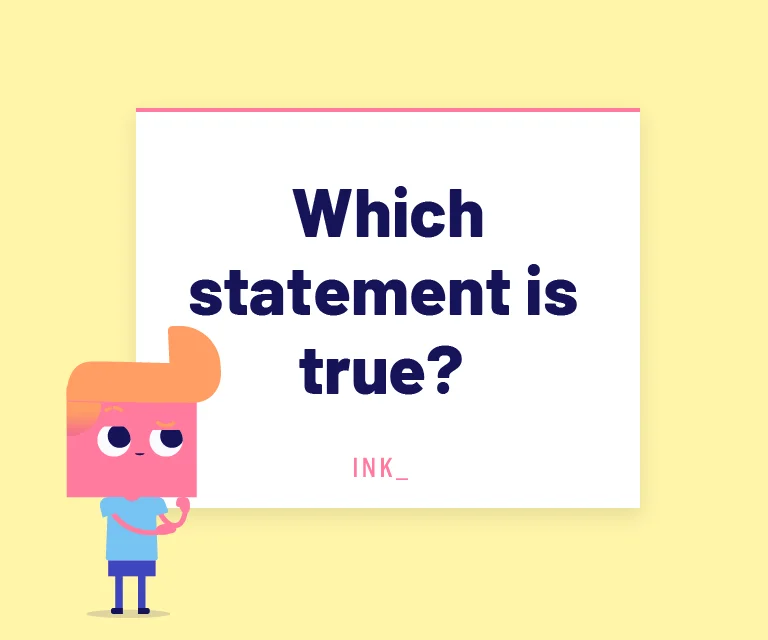

The answer is C. “Blonde” can work as a noun or adjective. It describes someone with light hair.
Blonde or Blond Question #2
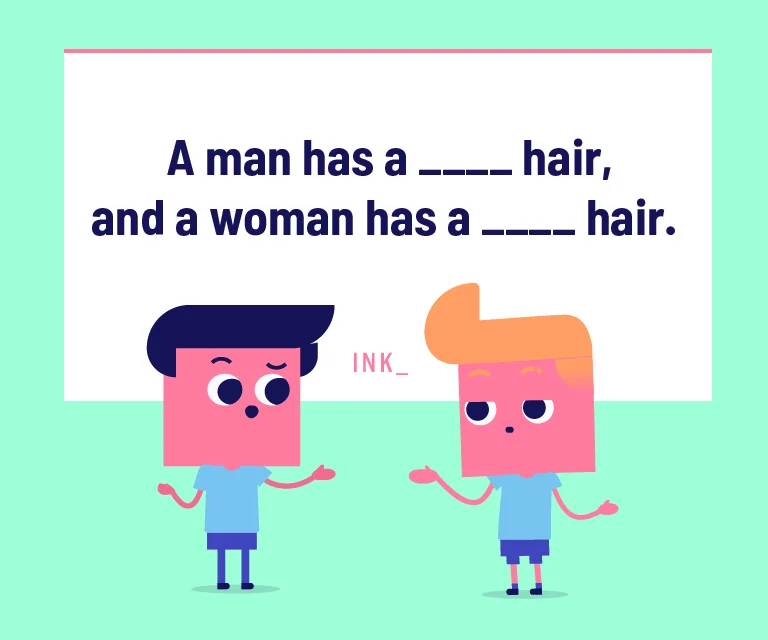

The answer is B. Men are blond, and women are blonde.
Blond or Blonde Question #3
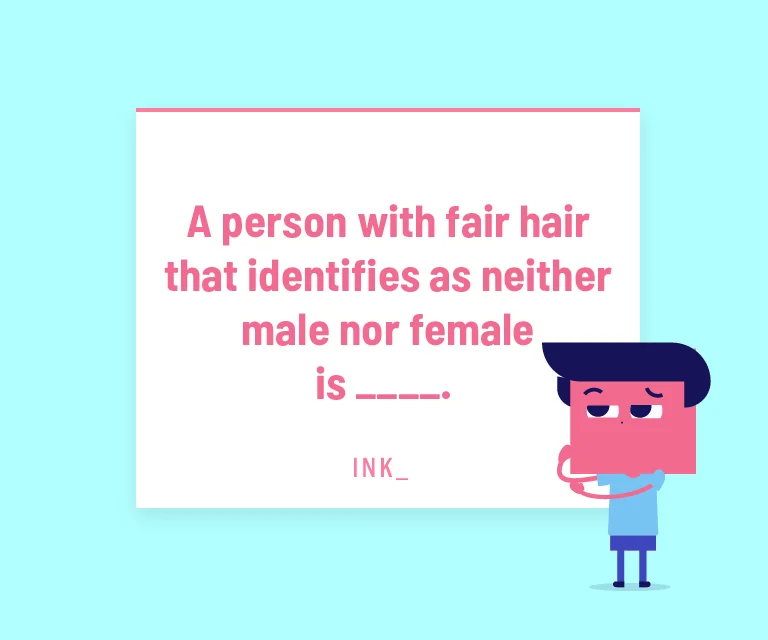

The answer is BLOND. The gender neutral terms would be a blond person with blond hair.
Blonde vs. Blond Question #4
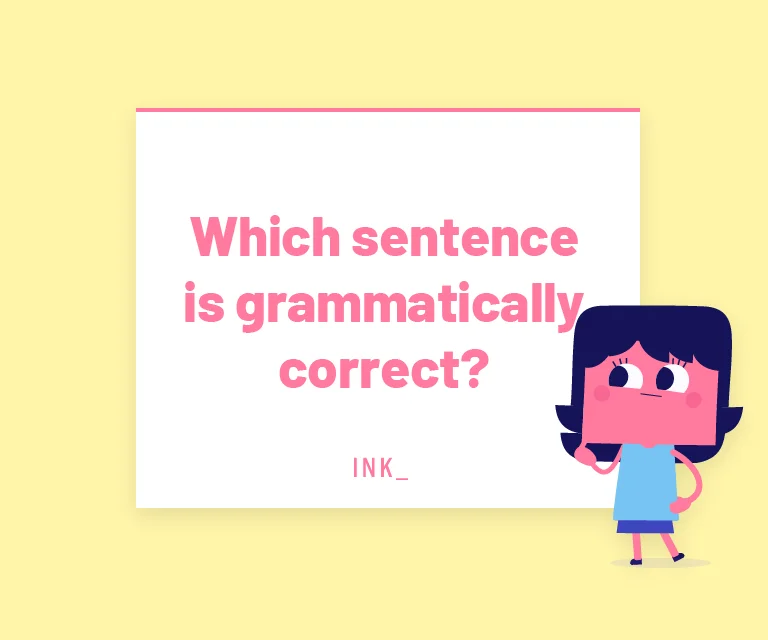

The answer is B. Coffee is always classified as blonde, not blond.
Blonde vs. Blond Question #5
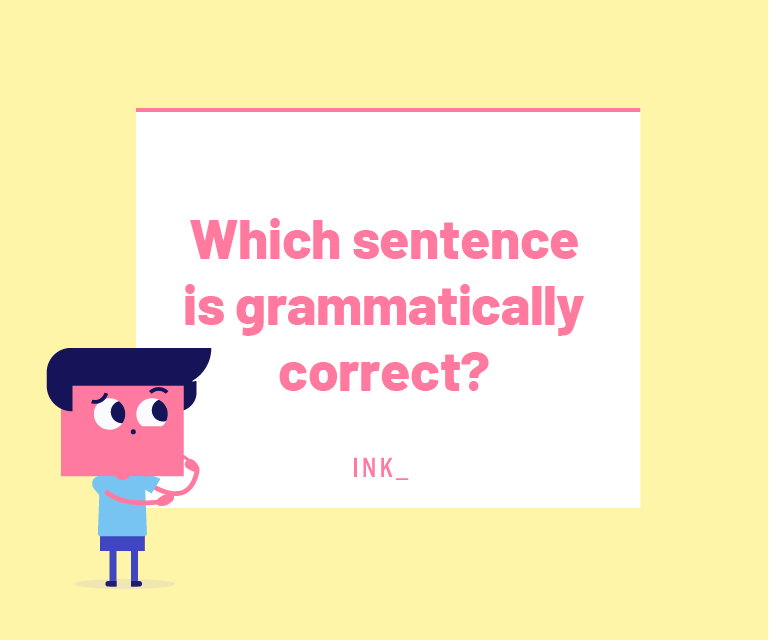

The answer is A. Light-colored wood is blond, not blonde.

Hi, just a heads up you mentioned caffeinated drinks are blonde not blond and then you said blond espresso
Hey, Jaylan! Great catch. Thanks for your note. We’ve made the correction. For the record, caffeinated drinks are blonde (with an ‘e’), not blond (without an ‘e’). Thanks again for taking the time to read the article and let us know about this line. Cheers!